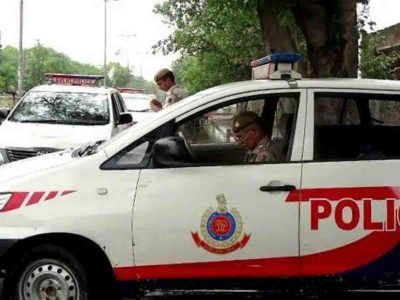Delhi’s air quality plummeted to the alarming “severe plus” category on Friday morning, prompting the immediate implementation of emergency measures mandated by the Centre’s air pollution control plan for the National Capital Region.
This stage, characterised by an Air Quality Index (AQI) exceeding 450, has triggered a ban on polluting trucks, commercial four-wheelers, and all types of construction activities, as outlined in the policy document prepared by the Commission for Air Quality Management (CAQM).
While the CAQM, the statutory body responsible for pollution control strategies, had already ordered a ban on non-essential construction work and specific categories of polluting vehicles on Thursday, it had not yet enforced all emergency measures. These measures also include work-from-home directives for government and private offices.
The worsening air quality has prompted authorities to close primary schools in the capital.
Under Stage IV of the Graded Response Action Plan, only Compressed Natural Gas (CNG), electric, and Bharat Stage VI (BS VI)-compliant vehicles from other states are allowed to enter Delhi. Exemptions are granted to vehicles engaged in essential services. Additionally, medium and heavy goods vehicles not involved in essential services are also required to be banned within the capital.
The city witnessed a drastic increase in AQI from 351 on Thursday morning to a staggering 471 on Friday morning. This sudden rise can be attributed to highly unfavourable meteorological conditions and a sharp spike in stubble burning incidents in neighbouring states.
The air quality crisis is not limited to Delhi alone. Several cities in neighbouring Haryana, Rajasthan, and Uttar Pradesh have reported hazardous air quality levels. Health professionals have expressed concerns, noting a surge in respiratory problems, particularly among children and the elderly. They strongly advise people with respiratory issues to stay indoors and use air purifiers.
Unfavourable meteorological conditions, coupled with emissions from firecrackers, paddy straw burning, and local pollution sources, have contributed to the hazardous air quality levels in Delhi-NCR during the winter season.
According to a study, air pollution in India resulted in 1.67 million deaths in 2019, making it the country with the highest pollution-related death toll globally. This alarming situation also accounted for significant economic losses amounting to USD 36.8 billion
One of the primary reasons for the recent surge in pollutants is the absence of rainfall during the post-monsoon season. In contrast to previous years, Delhi experienced minimal rainfall in October and no rain in November, exacerbating the pollution crisis.
Smoke from stubble burning, a major contributor to the pollution problem, accounted for 25% of PM2.5 pollution in Delhi on Thursday, a figure expected to rise to 35% on Friday, according to a model-based system developed by the Indian Institute of Tropical Meteorology in Pune.
Efforts to reduce stubble burning have faced challenges, with states like Punjab and Haryana witnessing a surge in farm fires due to increased paddy production and the abundance of paddy straw. Authorities are actively working to curtail these incidents and mitigate the pollution crisis that continues to grip the region. (With inputs from PTI)





